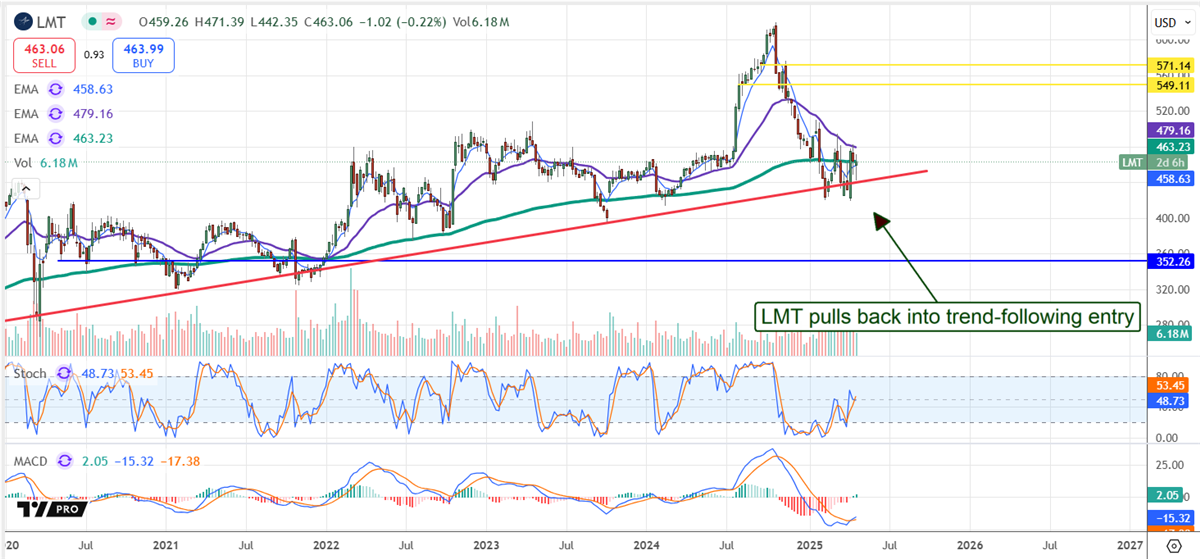The tariff-induced stock market sell-off indeed began with a cause. Still, the market overcorrected as some investors sold everything, even the fundamentally sound buy-and-hold stocks they should have held.
This looks at five stocks with fundamentally sound businesses, healthy balance sheets, and sustainable, robust capital returns that sold off when they shouldn’t have. The takeaway in late April is that these stocks offer deep values to investors, and the fears that drove them lower are subsiding, setting their prices up for significant increases as the year progresses.
1. Snap-on: Mixed Results, Easy to Overlook as End Markets Show Resilience
Snap-On Inc (NYSE:) reported a mixed Q1, but its performance relative to the consensus estimates is easy to overlook for many reasons, including its guidance. The company says its businesses and end markets are resilient and expected to remain stable in 2025.
Where companies may be pulling back on new products, they are leaning into maintenance. Other catalysts in 2025 include growth initiatives, such as Automotive, which have begun to pay off.
Snap-on’s capital return is attractive. In mid-April, the dividend yield was 2.8%, compounded by share buybacks. The share buybacks aren’t aggressive but reduce the quarterly count and provide investors with leverage. Balance sheet highlights at the end of Q1 include increased cash, inventory, and assets, with equity up by more than 2%. Leverage remains low.
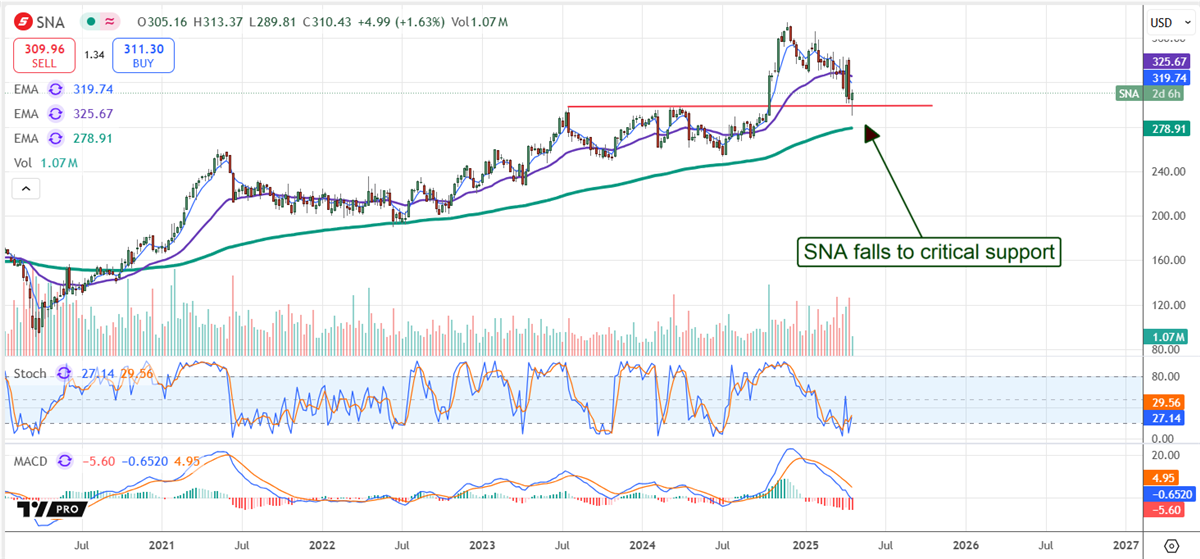
2. Whirlpool’s 9% Yield Is a Hot Buy in 2025
Whirlpool Corporation (NYSE:)’s Q1 results include a significant contraction in revenue and earnings that mask the company’s true strength. The decline is due to divestitures and repositioning efforts to capture the U.S. housing market recovery. That includes selling EU assets and leaning into domestic sales.
Whirlpool’s domestic sales are not immune to the tariff threat, but they are well insulated, with 80% of goods manufactured in the U.S.
The timing of the housing rebound remains questionable but could begin as soon as economic headwinds ease, including tariff woes and higher interest rates. Until then, Whirlpool’s dividend, which yields 9% with shares near $81.50, is safe and relatively inexpensive to buy. Q1 balance sheet highlights include reduced debt and a 13% increase in equity.
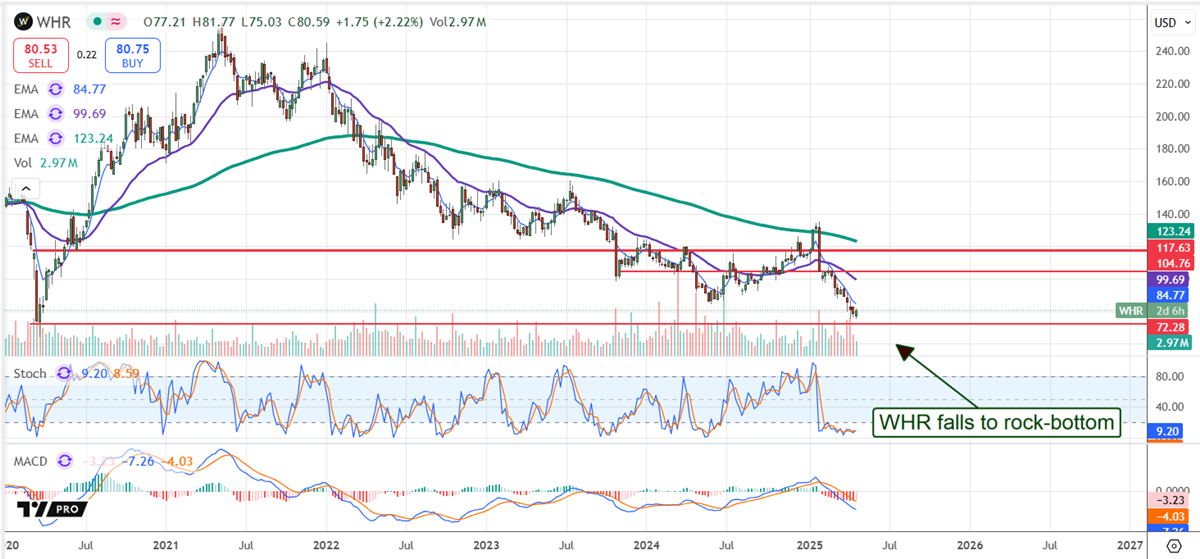
3. Verizon: Slow and Steady Wins the Race for This High-Yielder
Verizon Communications Inc (NYSE:) isn’t growing quickly, but it is growing and leading the industry in size and scope.
The critical details in 2025 are that it reaffirmed its guidance along with the Q1 report, which includes an outlook for expanding free cash flow.
Verizon has been improving its free cash flow through various efforts, including debt reduction, strengthening its balance sheet, and enhancing dividend health.
The payout is about 58% of the 2025 earnings outlook, and it is expected to grow at a low single-digit pace for the foreseeable future.
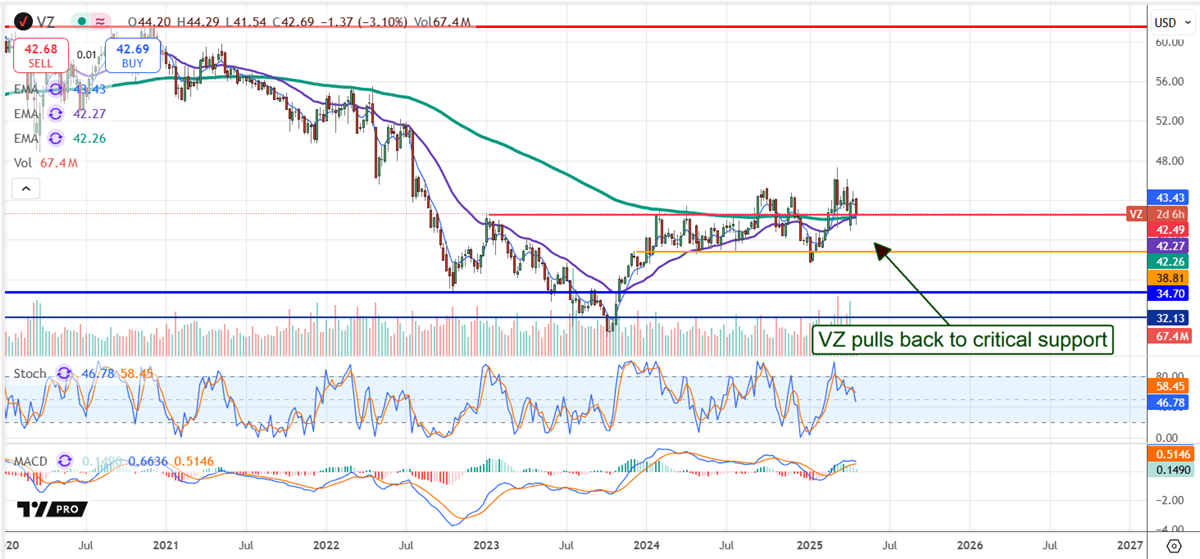
4. Cintas: Labor Markets Remain Strong, Uptrend is Intact
Cintas Corporation (NASDAQ:)’ H1 price pullback is due to several factors, including the late 2024 stock split.
Following the Q1 earnings report, the narrative heading into Q2 2025 is clear: the business remains strong, capital returns are expected to continue, and the stock’s upward trend remains firmly in place.
This business is supported by healthy labor markets that show no sign of cooling, so outperformance is more likely in Q2 and H2 2025 than not.
Cintas’ stock price has been propelled higher for more than two decades, thanks to its fortress balance sheet, self-funded growth, consistently rising dividend payouts, and ongoing share buybacks, with no signs of slowing down.
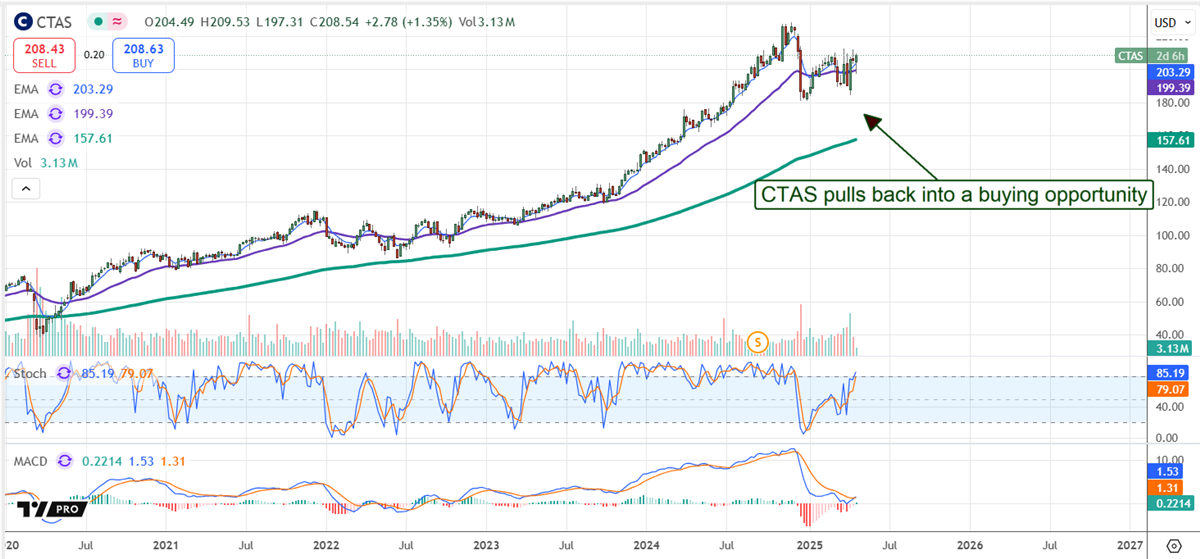
5. Lockheed Martin: Touches Down for a Buying Opportunity
Lockheed Martin Corporation (NYSE:)’s price plunge in late 2024 and early 2025 is due primarily to the loss of a critical contract the previous year.
However, the pullback has the stock price at trend, set up to rebound because the fundamentals remain strong.
The Q1 results were solid, and guidance was reaffirmed. More importantly, the outlook for U.S. government defense sector spending is robust, with President Trump pledging a 13% increase for next year.
Until then, investors can rely on Lockheed’s dividend, which yields 2.8% in late April, and the buybacks, which reduced the count by 2.6% year-over-year in Q1.
